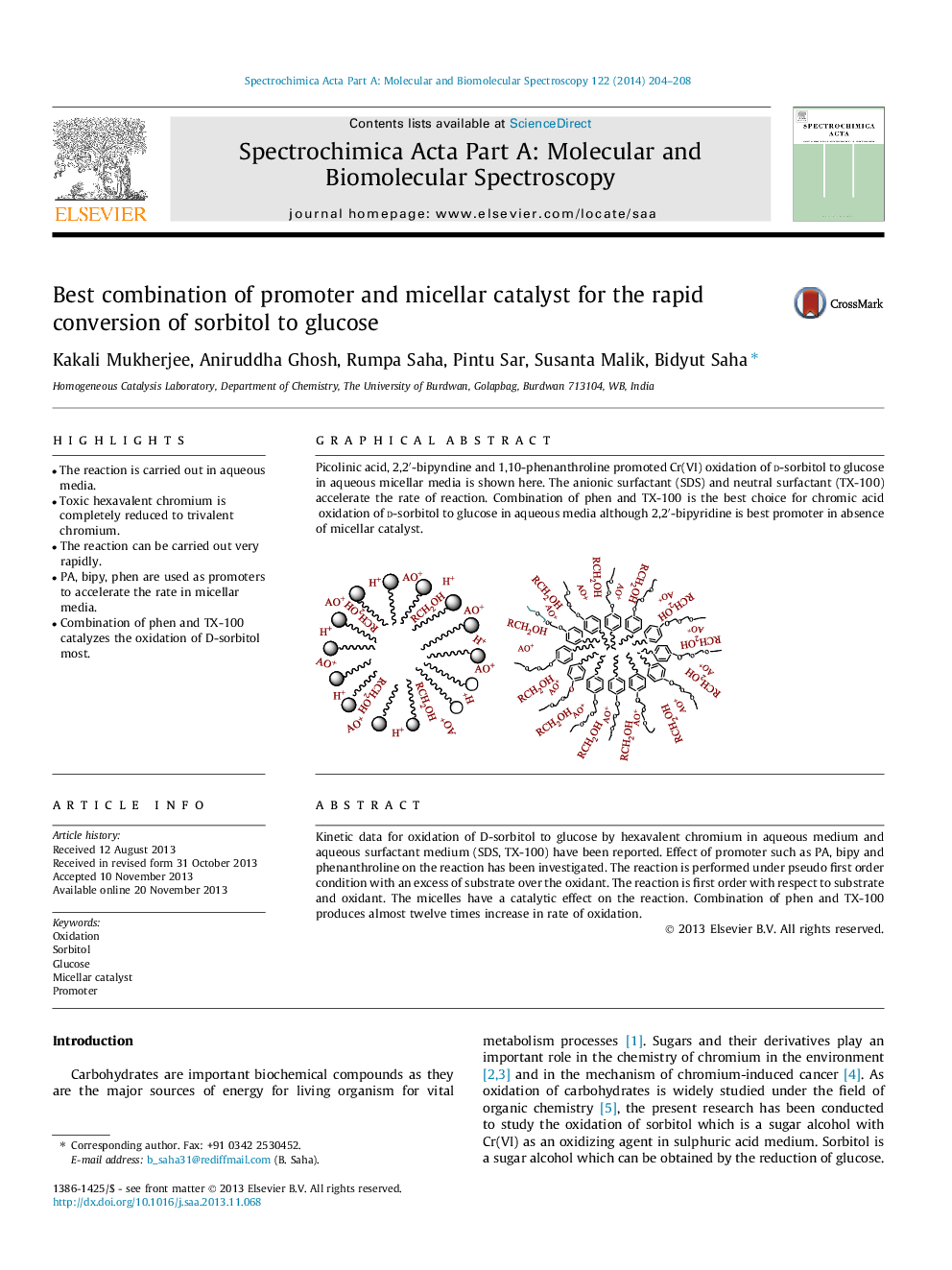| Article ID | Journal | Published Year | Pages | File Type |
|---|---|---|---|---|
| 1230236 | Spectrochimica Acta Part A: Molecular and Biomolecular Spectroscopy | 2014 | 5 Pages |
•The reaction is carried out in aqueous media.•Toxic hexavalent chromium is completely reduced to trivalent chromium.•The reaction can be carried out very rapidly.•PA, bipy, phen are used as promoters to accelerate the rate in micellar media.•Combination of phen and TX-100 catalyzes the oxidation of D-sorbitol most.
Kinetic data for oxidation of D-sorbitol to glucose by hexavalent chromium in aqueous medium and aqueous surfactant medium (SDS, TX-100) have been reported. Effect of promoter such as PA, bipy and phenanthroline on the reaction has been investigated. The reaction is performed under pseudo first order condition with an excess of substrate over the oxidant. The reaction is first order with respect to substrate and oxidant. The micelles have a catalytic effect on the reaction. Combination of phen and TX-100 produces almost twelve times increase in rate of oxidation.
Graphical abstractPicolinic acid, 2,2′-bipyndine and 1,10-phenanthroline promoted Cr(VI) oxidation of D-sorbitol to glucose in aqueous micellar media is shown here. The anionic surfactant (SDS) and neutral surfactant (TX-100) accelerate the rate of reaction. Combination of phen and TX-100 is the best choice for chromic acid oxidation of D-sorbitol to glucose in aqueous media although 2,2′-bipyridine is best promoter in absence of micellar catalyst.Figure optionsDownload full-size imageDownload as PowerPoint slide
